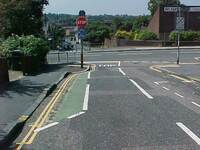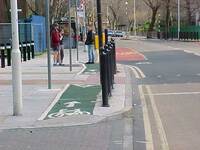- England
- Scotland
- France
- Holland
- Germany
- Italy
- Spain
- Portugal
- USA
- China
- Japan
- India
- Iran
- Advice
- Gardens
- England
- Scotland
- France
- Holland
- Germany
- Italy
- Spain
- Portugal
- USA
- China
- Japan
- India
- Iran
- Advice
- Garden Tours
Book: Landscape Planning and Environmental Impact Design: from EIA to EID
Chapter: Chapter 10 Sustainable green transport
We can have a far greater range of route-types than at present, and better links between transport modes. If vehicle speeds or traffic volumes are high, routeways may have to be designed for exclusive use by motor vehicles. But if speeds and volumes can be kept low to moderate, it is possible for cars, walkers, riders and cyclists to share a route. For example, lightly trafficked country lanes work well with infrequent use by all transport modes: cars, trucks, cyclists, horses, pedestrians and herds of animals. Also, in shopping streets where speeds and the number of vehicle movements are low, cars and pedestrians can share a paved surface without hazard. Where 'special provision' is made for pedestrians, cyclists or horses, it is usually for the special convenience of car drivers. The question of what traffic volume counts as 'low' depends on local circumstances. Roads should be contextualised, for the reasons set out above, and diversified, as discussed below, to give users a wide choice between transport modes, journeys and experiences. There is a need to invent new routeway types - and to re-invent some historic types. Also, there is a need for better junctions between transport modes. When each mode is the responsibility of competing experts, junctions are neglected. Yet they are of supreme importance. Alexander's Pattern Language began with the observation that the meeting point of a footpath with a bus route is a key node in the town which should be marked with a newsagent, a coffee shop and a sitting place (Turner 1996: 22). Similarly, railway stations should be hubs for footpath, bus, cycle and skate routes.

